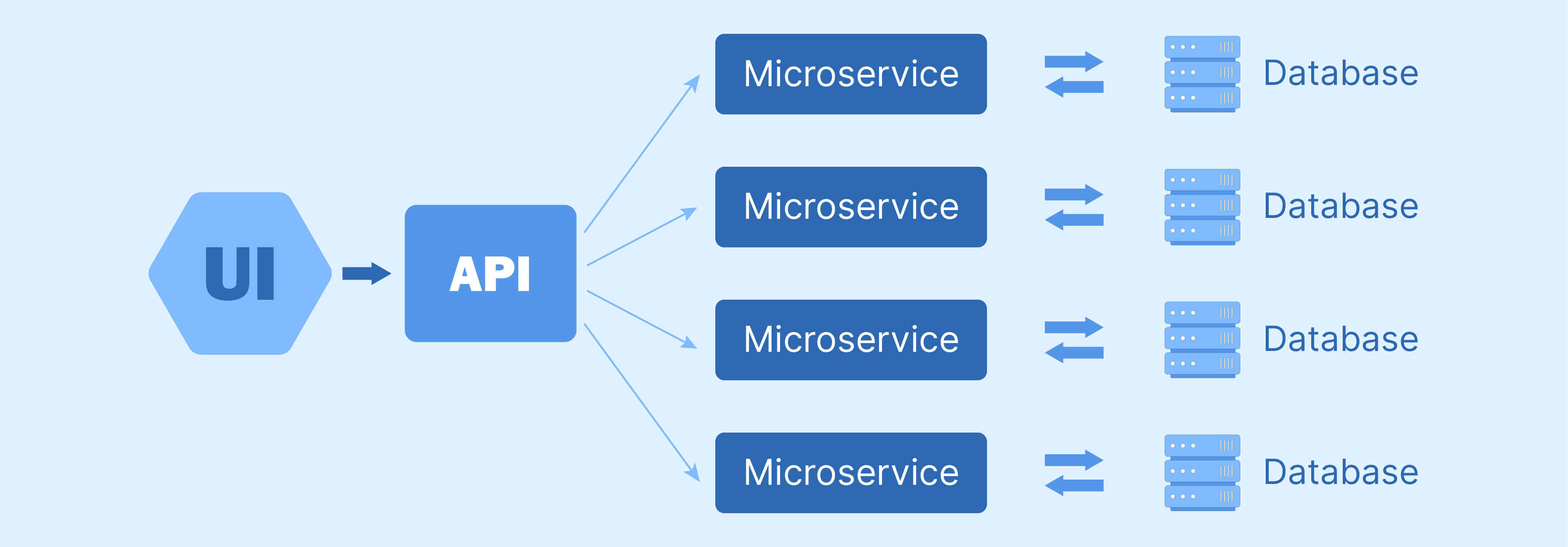
Magento Microservices vs. Traditional Monolithic Architecture
Looking to enhance the development cycle of your Magento store? Discover how Magento microservices accelerate time-to-market and set a new standard for your Magento store. We will understand how Magento microservices are better than traditional monolithic architectures.
Key Takeaways
-
Understand the concept of Magento microservices and its significance.
-
Explore how Magento microservice architecture improves scalability, flexibility, and modularity.
-
Learn about the components of Magento microservices, including storefront and inventory.
-
Discover the benefits of Magento microservices, such as resilience and faster time-to-market.
-
Differentiate Magento microservices from traditional monolithic architectures.
What is Magento Microservices?

Magento microservices is an architectural approach to building and deploying e-commerce applications. Magento provides microservice support that enables developers to create modular and flexible applications.
Microservices architecture involves breaking down a large application into smaller, loosely coupled services. Magento microservices architecture splits the e-commerce application into various services such as:
-
Catalog management
-
Checkout
-
Order processing
-
User authentication
-
Inventory management
Each of these services is responsible for a specific function or feature. These services can be developed, deployed, and scaled independently. It allows for more efficient development workflows and better resource utilization.
Components of Magento Microservices
1. Storefront Service
Storefront Service handles the presentation layer of the e-commerce website. It manages the user interface, including:
-
Product listings
-
Checkout process.
The storefront service communicates with other microservices to:
-
Retrieve product data and process orders
-
Manage user sessions.
2. Catalog Service

Catalog Service stores product information, attributes, and categories. It manages:
-
Product-related operations such as creating, updating, and deleting products.
-
Product search functionalities.
The service also ensures that product data is efficiently managed and accessible across the system.
3. Inventory Service
Inventory service manages product inventory and stock levels. It helps:
-
Track available product quantities
-
Handle stock reservations during checkout
-
Update inventory levels in real time.
The service helps prevent overselling and ensures accurate inventory management.
4. Order Service
Order Service manages the entire order lifecycle, from order creation to invoicing. It helps:
-
Handle order processing
-
Calculate pricing
-
Apply discounts
-
Update order status.
The service also communicates with shipping and payment gateways to process orders better.
5. Customer Service

Customer Service handles:
-
Account management
-
Customer-related operations.
It manages:
-
User Registration
-
Password management
-
Profile information.
The service ensures secure access to customer data and provides a better ecommerce experience.
6. Payment Service

Payment Service integrates with payment gateways to process transactions securely. It supports various payment methods, including:
-
Credit/debit cards
-
Digital wallets
-
Alternative payment options.
It helps:
-
Handle payment authorization
-
Capture funds
-
Manage refunds.
7. Shipping Service
Shipping service helps to:
-
Calculate shipping rates
-
Generate shipping labels
-
Manage order shipments.
It integrates with shipping carriers to obtain real-time shipping quotes and tracking information. The service ensures accurate shipping costs and timely order delivery.
8. Notification Service
Notification service sends out various types of notifications to customers and administrators. It handles:
-
Order confirmation emails
-
Transactional emails.
The service keeps users informed about their orders. It also enhances communication between customers and merchants.
9. Analytics Service

Analytics service collects and analyzes data to provide insights into:
-
Customer behavior
-
Sales performance
-
Website usage.
It tracks key metrics such as:
-
Average order value
-
Customer retention.
The service helps merchants make data-driven decisions to boost their online store’s performance.
Significance of Magento Microservices
1. Scalability

Magento Microservices scales different components of Magento stores independently based on demand. Each microservice can be deployed, updated, and scaled.
It enables the system to handle increased traffic and workload efficiently. It ensures that the platform can grow as the business expands without compromising performance.
2. Flexibility
It gives developers the flexibility to choose the most suitable technology stack for each service. It enables teams to leverage the strengths of various technologies and adapt them to different business needs. This helps enhance the overall agility and innovation.
3. Modularity

It promotes modularity by breaking down complex e-commerce systems into smaller, independent services. Each microservice focuses on a specific business function, such as:
-
Order processing
-
Payment handling.
It makes the system easier to understand, develop, and maintain. Changes and updates can be made to individual services without impacting the entire system.
4. Resilience
Magento microservices improve system resilience by isolating failures from individual services. If one microservice experiences an issue or failure, it does not necessarily affect the entire system.
It ensures that the Magento store remains operational and available to users. It provides better recovery strategies to handle failures gracefully, such as:
-
Retry mechanisms
-
Circuit breakers.
5. Faster Time-to-Market
Since each service can be developed and tested independently, developers can work in parallel. This accelerates the entire development process. It allows teams to release new features more frequently.
It helps e-commerce businesses stay competitive by quickly adapting to:
-
Market trends
-
Customer preferences
-
Emerging technologies.
6. Improved Performance

It distributes workload across multiple services to improve:
-
Overall system performance
-
Site responsiveness.
Services can be optimized for specific tasks, such as:
-
Caching frequently accessed data
-
Parallelizing computationally intensive operations.
It reduces latency and improves user experience.
7. Enhanced Maintenance and Evolution
It facilitates easier maintenance and evolution of e-commerce systems over time. Developers can change and update individual services without disrupting the entire system. This is because each service is self-contained and has well-defined boundaries.
It enables continuous improvement and innovation, as new features can be introduced incrementally. It also minimizes the risk of regression or downtime.
How Magento Microservices Differ From Traditional Monolithic Architectures
| Aspect | Traditional Monolithic Architecture | Magento Microservices |
|---|---|---|
| Architecture | Single, unified application with tightly coupled components. | Decomposed into independent services with well-defined boundaries. |
| Technology Stack | It typically relies on a single technology stack used throughout the application. | It allows for flexibility in technology choices for each microservice. It enables the use of different stacks as needed. |
| Development & Deployment | Developers work on the entire codebase, deploying updates as a single unit. | Developers work on individual microservices. It allows for independent development, testing, and deployment. |
| Scalability | Scaling involves replicating the entire application. It is potentially inefficient. | It enables granular scalability. Individual microservices can be scaled independently based on demand. |
| Fault Isolation | Failure in one part can impact the entire system. It leads to potential downtime. | Failures in one microservice are isolated. It does not necessarily affect the entire system, enhancing resilience. |
| Complexity & Maintenance | Complexity increases with the size of the application. It makes maintenance challenging. | Reduced complexity due to smaller, more manageable microservices. It facilitates easier maintenance and updates. |
FAQs
1. How are Magento microservices related to Adobe Commerce?
Magento microservices break various components of an Adobe Commerce platform. These independent services communicate with each other through API. It allows for greater scalability, flexibility, and resilience in managing e-commerce operations.
2. How do Magento microservices impact the User Interface (UI) of websites?
Magento microservices make the UI of websites more dynamic and responsive. It enables developers to decouple UI components from the backend logic. This provides them greater flexibility to design and optimize the front-end experience.
3. What are the benefits of adopting Magento microservices for backend operations?
Adopting Magento microservices for backend operations offers several advantages. It enhances scalability by allowing individual services to scale independently based on demand. It improves fault tolerance since failures in one microservice don't necessarily affect the entire system.
Summary
Magento microservices architecture enhances the development cycle of e-commerce applications. It uncovers several other points, including:
-
It breaks down the application into smaller, loosely coupled services to enhance scalability and modularity.
-
The key components of Magento microservices are storefront, catalog, inventory, and analytics services.
-
Magento microservices accelerate time-to-market through parallel development and frequent feature releases.
-
Magento microservices offer easier maintenance and updates than traditional monolithic architectures.
Experience high performance and scalability of your Magento 2 store. Get managed Magento hosting to run your Magento microservices.


